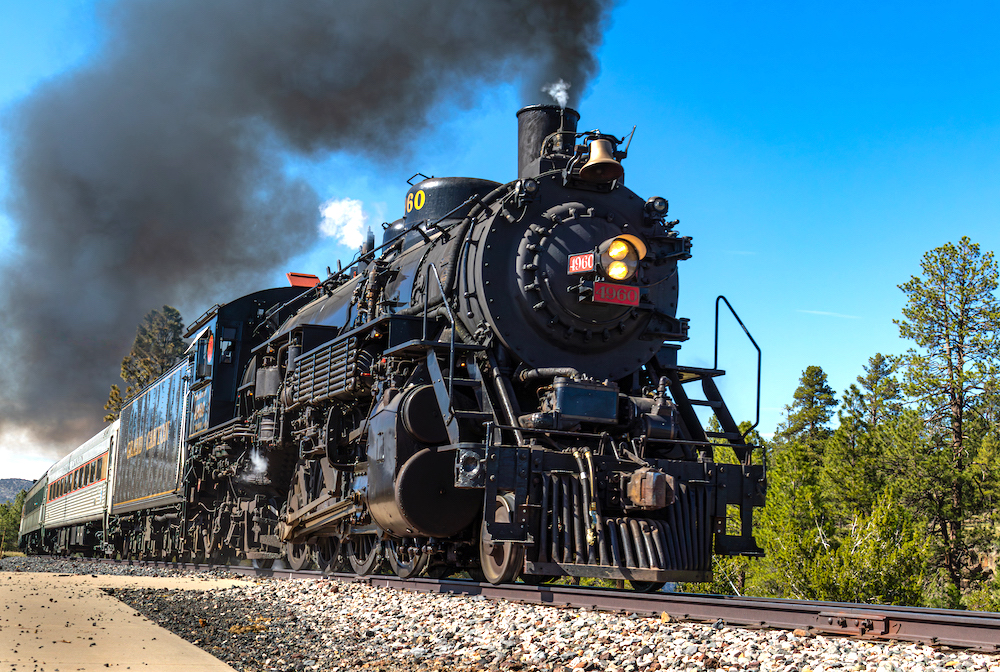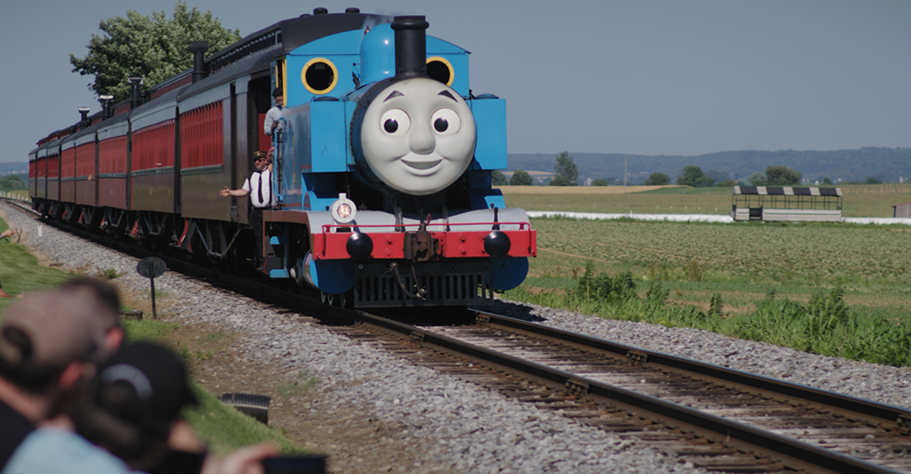
WILLIAMS, Ariz. — In its second round trip of the 2024 season, Grand Canyon Railway No. 4960 performed well on Saturday, April 6, with its first of three April excursions. Along the rugged line between Williams and the South Rim, the 2-8-2 and F40 diesel-helper No. 4128 lugged the 16-car train with 900 passengers aboard, said railway chief mechanical officer Eric Hadder. He also confirms a private charter with No. 4960 to take place sometime between now and the next scheduled steam excursion on April 20 as part of Earth Day. “There is not any unusual maintenance planned for this time, except to keep the water warm,” he said.
As the steam season continues for, so has the challenge of building the engine crew needed for the program. The recent retirement of a long-time fireman currently has the team down to four personnel qualified to operate No. 4960 and stablemate 2-8-0 No. 29 [See “Grand Canyon Railway No. 4960 launches 2024…” News Wire, March 4, 2024]. “I was speaking with our trainmaster on this yesterday, as she is trying to fill several positions in the operations department, and some of her applicants are interested in working on the steam crew,” Hadder said.
Trains News Wire was provided a basic itinerary a steam engineer certification on the Grand Canyon Railway:
Year 1
“Work in the car yard as a switchman and learn about the equipment on GCRY: Diesel-electric locomotives, passenger cars, air brake tests and operation, and head-end power. Next is to work with the mechanical shop crew to maintain and hostle the steam locomotives. A highly qualified candidate might become a yard diesel engineer and then a road diesel engineer in this time, others may take longer.”
Year 2
“After becoming a road-qualified diesel engineer and working as a steam hostler, you start training as a steam fireman on the road. Grand Canyon Railway has undulating territory with grades as steep as 3% and speeds up to 40 mph. The most difficult part about being a fireman is learning where to carry your water level during the trip, knowing that you can go from a full glass to a quarter in about 60 seconds in certain places. This is where being a qualified diesel engineer first is a great advantage because the fireman trainee already knows where the grades change along the route. I would expect a trainee to need 10-12 trips as a fireman to be qualified on the railroad. Since this is about how many times we run per year, it will take a full year to qualify a fireman.”
Year 3
“A fully qualified fireman can then train as a steam engineer. Being an already experienced diesel engineer and qualified steam fireman, training for a steam engineer has a lot to do with learning proper valve gear settings. There is a balance between chest pressure and back pressure that comes with experience, knowing how the locomotive sounds and what it needs, and knowing when to expect slipping of the drivers and how to adjust. There’s also needing to learn how to operate the trailing diesel using the control box while balancing the load and braking forces between the two locomotives. Again, this typically takes 10-12 trips to get these things down, so about a year.”
Year 4 and beyond
“Once a candidate is qualified, there is another waiting in the wings as we cannot stop searching for and teaching new candidates. So, a qualified engineer or fireman will probably spend much of their time teaching others, which can often include sitting behind them during the trip and guiding them on how to properly operate the controls. Qualified enginemen on GCRY may only actually operate the controls of the steam locomotives a few times a year.”
Hadder cautions the listed itinerary is optimal, with no “fast track” for shortening the timeline: “Grand Canyon Railway is probably one of the most difficult lines to run in the U.S., especially on a steam locomotive.”
For more information, visit the Grand Canyon Railway and Hotel website. The “Steam Saturdays” schedule is available here.













